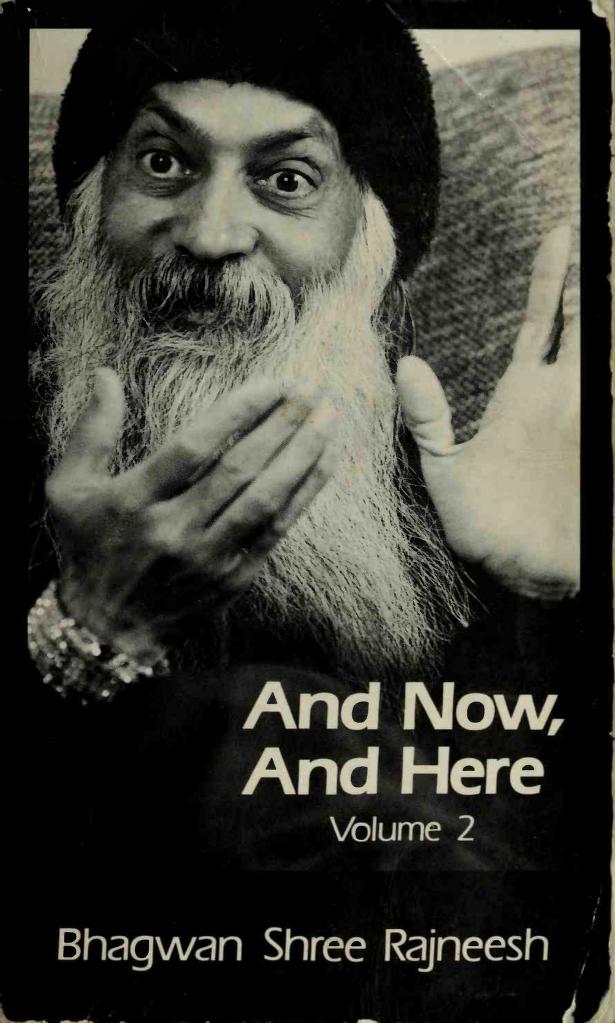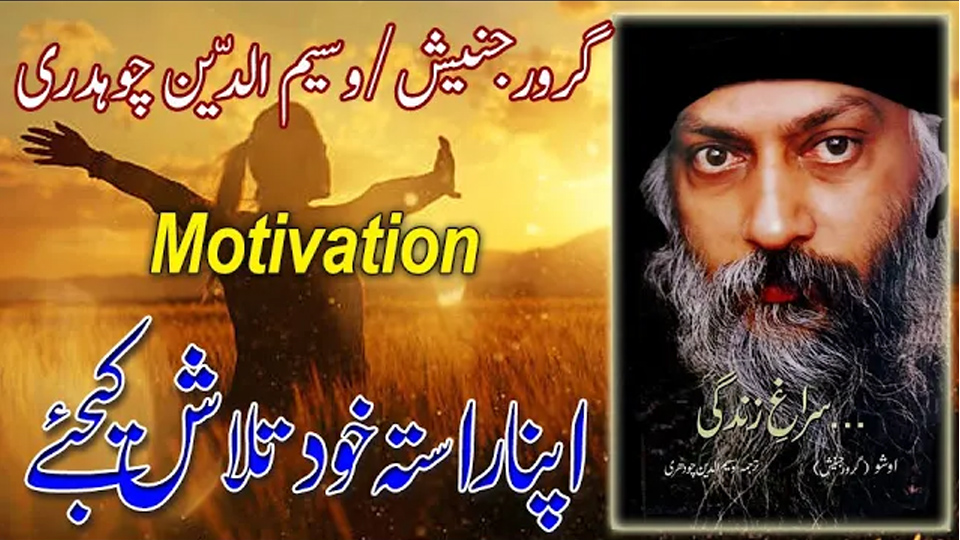The Concept of Life After Death: Reality or Illusion?
Life after death is one of the most debated topics in human history. Philosophers, scientists, and spiritual leaders have long tried to answer the question: What happens when we die? Is life after death a mere illusion, or does something truly persist beyond our physical existence?
Osho, a revolutionary spiritual thinker, offers a unique perspective on this subject. According to him, both life and death are realities, yet they are deeply interconnected in ways most people fail to understand.
The Fear of Death and Its Impact on Human Life
The fear of death shapes many of our actions, beliefs, and choices. Osho explains that this fear is rooted in a limited perception of life. Most people see death as the ultimate end, a tragic conclusion to their existence. However, Osho argues that this fear arises because we are overly attached to our temporary identities—the body, name, and relationships.
To truly understand what happens after death, one must first explore the nature of life itself. The cycle of birth and death is just a transformation; nothing truly ends, but rather, it changes form.
Is Death the End or a New Beginning?
Osho compares death to darkness and life to light. Just as darkness does not exist independently but is merely the absence of light, death is not an absolute end but the absence of the known physical experience. He suggests that beyond this material world, there exists a state of being that is beyond life and death—a reality that remains unaffected by physical mortality.
Many spiritual traditions believe in reincarnation, the idea that the soul transitions from one body to another. Osho, while acknowledging this concept, focuses more on the realization that life is a continuous flow and that clinging to past identities leads to suffering.

The Illusion of Identity and the Eternal Self
One of Osho’s central teachings about life after death is that the ‘self’ we identify with is temporary. A father, a mother, a child—these are roles we play in the grand theatre of existence. When the body perishes, these roles dissolve, but something deeper remains. This is the eternal consciousness, the witness, the pure awareness that does not die.
To illustrate this, Osho shares an analogy: If a house collapses, does it mean the space within it ceases to exist? No, the space remains—it is only the structure that is gone. Similarly, death is the collapse of the physical form, but the essence of who we are continues beyond it.
Questioning Blind Beliefs About the Afterlife
A key aspect of Osho’s philosophy is the rejection of blind faith. He warns against accepting ideas about life after death without direct experience or personal exploration. According to him, both believers and atheists can be equally trapped in dogma—one blindly believing in heaven and hell, while the other denies any possibility beyond physical existence.
Instead, Osho encourages deep meditation and self-inquiry as a means to uncover the truth about life after death. He suggests that through heightened awareness and consciousness, one can experience the eternal aspect of existence while still alive.
Embracing Death as a Natural Process
Rather than fearing death, Osho advises embracing it as an essential and natural transition. He teaches that true liberation comes when one lives fully in the present and accepts death as an integral part of life. By doing so, the fear of death dissolves, and one attains inner peace.
Conclusion: The Mystery of Life After Death Remains Open
The question of What happens when we die? Remains open-ended. Osho’s teachings provide a refreshing perspective—neither rigidly confirming nor denying life after death but urging individuals to seek their truth. Life after death may be a mystery, but understanding the nature of life itself is the first step toward unravelling it.
By contemplating death deeply, not as an end but as a transformation, one can transcend the fear associated with it and live a life filled with awareness, peace, and acceptance.
If you’re interested in reading this book, click the link below for a free download.
https://drive.google.com/file/d/1hpJxyalEMvfE_csJ0yB8V27nArvIMWYI/view?usp=sharing
If you’d like to listen to this book in audio format, click the CONTACT button below to get in touch with the AwazeUrdu team to order the audiobook.
You can also watch the same video on these social media platforms.
جب ہم مرتے ہیں تو کیا ہوتا ہے؟
مرنے کے بعد کی زندگی واہمہ ہے یا حقیقت؟
کہ کیا ہماری روحیں دو زندگیوں کے درمیان آوارہ پھرتی ہیں ؟
یا ہم دوسرا جنم کیوں اور کیسے لینا چاہتے ہیں؟
یہ ان چند سوالات میں سے چند ہیں جو استغراق کے ایک عمل کے دوران گجرات انڈیا کی دور افتادہ چٹانوں میں کئے گئے ۔ زیر بحث موضوع “موت” ہے اور انسانی زندگیوں پر اس خوف کے کیا اثرات مرتب ہوتے ہیں ان مشقوں کا منتظم ہمارے وقت کا نہایت با اثر روحانی عامل ہے۔
اوشو، جن کا اصل نام چندر موہن جین تھا، 1931 میں پیدا ہوئے۔ فلسفے میں ایم اے کے بعد وہ پروفیسر بنے اور اپنی شعلہ بیان تقریروں سے مشہور ہو گئے۔ 1974 میں پونا میں کمیون قائم کیا، جہاں ان کے پیروکار بڑھتے گئے۔ متنازع نظریات کی وجہ سے انہیں “سیکس گرو” کہا گیا۔
1981 میں امریکہ میں “رجنیش پورم” بسایا لیکن قانونی مقدمات کے بعد 1985 میں ملک بدر کر دیے گئے۔ واپسی پر کئی ممالک نے ویزا دینے سے انکار کیا، مگر 1987 میں انہوں نے دوبارہ پونا میں کمیون کھولا اور “اوشو” کہلانے لگے۔ 1990 میں انتقال ہوا، اور ان کی خواہش کے مطابق پیروکاروں نے جشن مناتے ہوئے آخری رسومات ادا کیں۔
AND NOW, AND HERE
زیر نظر کتاب : سراغ زندگی ) قاری کو اوشو کی عملی سرگرمیوں کے براہ راست مشاہدہ کا موقعہ دیتی ہے۔ اوشو موت کے بعد اس کے لیے ہمیں اپنے عقائد کا از سر نو جائزہ لینے کے لیے کہتا ہے اور ہمارے تحت الشعور میں دبے ہوئے موت کے خوف کی نشان دہی کرتا ہے۔
اردومیں اس کتاب کاترجمہ وسیم الدین چوہدری نےکیاہے۔ “سراغِ زندگی” کا موضوع پاکستان کے مخصوص سماجی حالات سے مطابقت نہ رکھنے کے با وجود بعض مخصوص حلقوں میں دلچسپی کے ساتھ پڑھا جاتا ہے۔ ہندومذہب کے خصوصی رجحانات میں آواگون کو ایک اہم مقام حاصل ہے، گیان دھیان استغراق ارتکاز توجہ ہا ئینا ئزم خود تنویمی وغیرہ بھی اسی سلسلے کی کڑیاں شمار کی جاتی ہیں اور ان سب موضوعات پر فاضل مصنف نے سیر حاصل بحث کی ہے جو دلچسپی رکھنے والوں کے لیے مفید معلومات اور عملی اقدامات کے لیے رہنمائی کا باعث ہوں گے۔
اوشو کے مطابق، زندگی اور موت دونوں حقیقت ہیں، مگر مختلف زاویوں سے دیکھنے پر ان کی تفہیم بدل جاتی ہے۔ موت بظاہر سب سے بڑا سچ ہے کیونکہ ہر زندہ شخص کو ایک دن مرنا ہے، مگر ایک اور حقیقت یہ بھی ہے کہ انسان کے اندر کچھ ایسا ہے جو کبھی فنا نہیں ہوتا۔
انہوں نے موت کو روشنی اور اندھیرے کی مثال سے سمجھایا کہ جس طرح اندھیرا بذاتِ خود کوئی وجود نہیں رکھتا بلکہ روشنی کی غیر موجودگی سے پیدا ہوتا ہے، اسی طرح موت بھی محض ظاہری فنا ہے، جبکہ اصل زندگی کسی اور سطح پر جاری رہتی ہے۔
اوشو یہ بھی کہتے ہیں کہ حقیقت کو یک طرفہ نظریے سے دیکھنے کے بجائے، اسے مکمل طور پر سمجھنا ضروری ہے۔ بغیر تحقیق کسی عقیدے کو مان لینا یا رد کر دینا، دونوں ہی وہم کے زمرے میں آتے ہیں۔ لہٰذا، نہ صرف مذہب پرست بلکہ لا مذہب لوگ بھی توہمات میں گرفتار ہو سکتے ہیں، کیونکہ بغیر تصدیق کسی چیز کو ماننا اور نہ ماننا دونوں ہی جہالت کی علامت ہیں۔
ان صفحات میں وہ ہمیں ارتکاز توجہ کے اپنے ذاتی تجربے کے ذریعے لافانی زندگی کے حصول کی طرف راغب کرتا ہے۔ تحت الشعور میں چھپے ہوئے اس خوف کا تریاق وہ ہوش و حواس میں رہتے ہوئے برضا و رغبت موت قبول کرنے کو قرار دیتا ہے۔ اس مشق کے دوران وہ ان سوالوں کے براہ راست جواب بھی دیتا ہے جو موت اور اس کے بعد پیش آنے والے واقعات سے متعلق ہوتے ہیں

